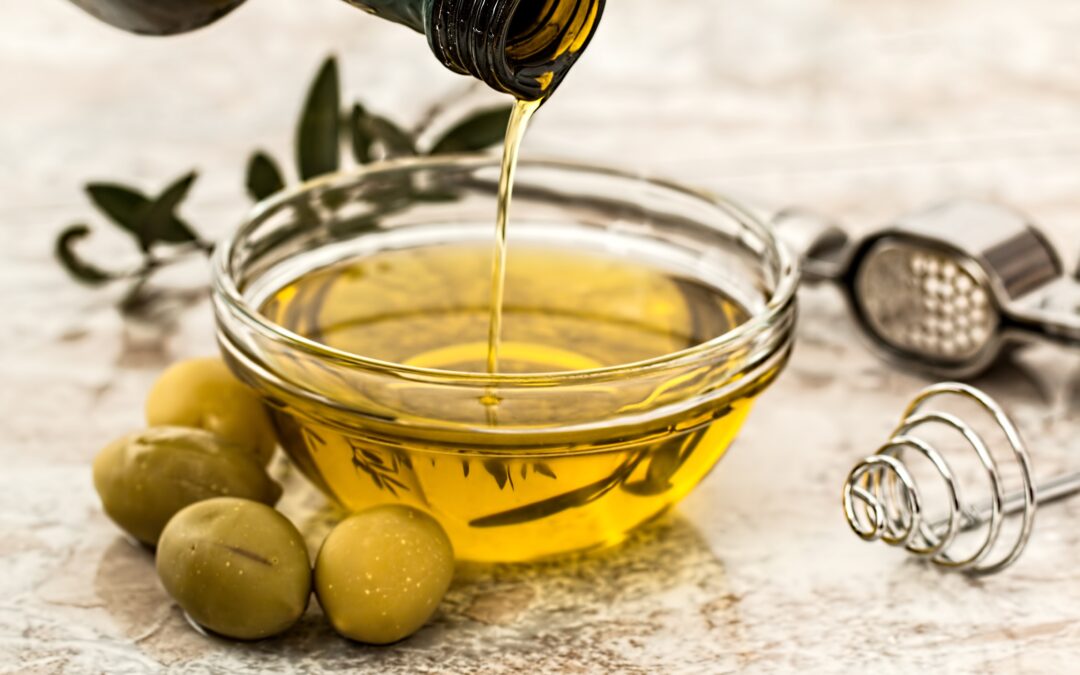
For all the many ways we try to eat healthier, one key commodity in our shopping list tends to be overlooked. The kind of oil we use to saute, fry, bake, or drizzle with is just as important as the food we eat. Not only do we use oil as a heat transfer medium, the oil that the food absorbs ends up in our digestive systems too.
If we are to truly eat healthy, we need to carefully consider what cooking oil to buy. But with the wide variety of choices in the grocery aisles, do you know which ones are the healthiest oils to cook with?
Fear not – here’s everything you need to know about cooking oils. Use this as handy guide to grease the wheels of your next culinary endeavor!

What You Need to Know About Oil
Before we get into the different types of cooking oils, there are two essential things you need to know about oil. First is how you store cooking oil or oil storage. Not many people know, but oils get rancid easily when exposed to light, heat, and oxygen.
The best place to store your cooking oil? The pantry, or anywhere that’s room temperature, cool, dark, and out of direct sunlight. For best quality and flavor from your oil, use it within one year of purchase.
The second important factor to consider in using oil for cooking is its smoke point. An oil’s smoke point is the temperature the oil starts burning and smoking. Different cooking oils have different smoke points. Low or high, an oil should not be heated past its smoke point, as it can release chemicals that not only harms the food’s flavor, but also releases free radicals harmful to your health.
Besides knowing the smoke point of the cooking oil you purchased, what other safeguarding measures can you take? Experts advise: always heat pan before adding oil, then add food after the oil becomes hot. This way, you can prevent the oil from breaking down, and you have a better chance of not going beyond the smoke point.
The kind of healthy cooking oil you should pick largely depends on what kind of cooking you’ll be doing. Here, we’ve listed down the most popular healthy cooking oils, discussed their merits, and the food preparation method each type is best for.

Olive Oil
Olive oil is well-known as one of the healthiest oils around. It is rich in healthy monounsaturated fatty acids and antioxidants. But did you also know that it has a low smoke point? Because of this, it’s not really recommended for frying. Instead, use olive oil for sauteeing over medium heat, roasting below its smoke point, or as an addition to dressings.
A word of warning, though. The best kind of olive oil is the extra virgin kind, and some of the bottles out in the market only claim to be “extra virgin.” The next time you’re scheduled to do grocery shopping, check out this list first to find out which brands passed the test.
Best for: Salad dressings and sautéing
Smoke point: Extra Virgin 325-375°F, Refined 465°F
Avocado Oil
Quickly catching up with olive oil’s popularity is avocado oil. Like olive oil, it’s unrefined, nutrient-dense, and contains antioxidants and monounsaturated fat, which is considered healthy for the heart. It’s also rich in omega-9 fatty acids, which helps in reducing inflammation in the body.
Because it has a mild flavor, avocado oil is very versatile, and is great for just about any kind of food, even in baking cakes and pastries. It has a high smoke point, so it’s a healthy choice for frying food. The only downside is that it’s expensive.
Best for: Frying, roasting, baked goods
Smoke point: Virgin 375°F, Refined 520°F


Canola Oil
You’ve probably seen a variety of canola oil products sprouting along the grocery aisles, but what is it and where did it come from? The name ‘Canola’ was registered as a trademark in Canada in 1970. The name comes from “Can” as in Canada and “ola” as in oil. Word has it that the two Canadian scientists bred a new plant out of a variety of rapeseed plants, which is now known as canola plant. Here’s an interesting trivia: as it is, rapeseed contains two toxic compounds that cannot be safely consumed. But the two scientists figured out how to make it safe for consumption with the canola plant.
How healthy is it? It contains a good amount of monounsaturated fats and a decent amount of polyunsaturated fats. It also contains Vitamins E, K, and plant sterols to promote heart health. Canola oil fans love it not only for its nutritional content, but also for its neutral taste and high smoke point (yes, it’s good for those deep-fries!). However, canola oil is highly-processed, the plant itself a product of GMO. But if you can find organic or unrefined ones, then those are more healthful. However, they’re rare and more expensive.
Best For: Sautéing, frying, baking
Smoke Point: 400°F
Walnut Oil
Extracted from walnuts, walnut oil is a golden-brown, delicious and nutty oil. It’s nutrient and healthy fat-rich, so it’s one of the healthiest on this list. However, since it has a very low smoke point, it’s not suitable for everyday cooking. Instead, drizzle it on pastas, soups, and even pour some into lattes. Buying walnut oil soon? Make it last longer (for about 8 months) by storing it in the refrigerator.
Best for: Salad dressings and drizzling
Smoke point: 320°F
Coconut Oil
Coconut oil is one of the most controversial oils. There have been disagreements over its health credentials, with media generally showering it with praises, while scientists doubting it would live up to its hype.
To understand the controversy, let’s look at coconut oil’s nutrient content. According to Healthline, compared to other cooking oils, coconut oil has a unique composition of fatty acids, with saturated fat lauric acid making up 40% of its total fat content.
“This makes coconut oil highly resistant to oxidation at high heat,” Healthline suggested. Hence, coconut oil is a great choice for frying.
The merits of coconut oil is still in contention, but there’s no harm in using coconut oil, as long as you use it in moderation.
Sunflower Oil
Pressed from the seeds of sunflower, this oil is rich in Vitamin E, and two types of fatty acids– polyunsaturated fatty acids and monounsaturated fatty acids. It has a high smoke point, and a neutral taste, so it’s a versatile oil to use for a variety of cooking methods. However, sunflower oil contains a lot of Omega-6 fatty acids, which are known to be pro-inflammatory. The body needs Omega-6 fatty acids, but they have to be balanced with Omega-3s. Should you avoid sunflower oil? Studies suggest sunflower oil may be alright in small amounts, and is best rotated with other oils like olive oil and avocado oil.
Best for: roasting and stir-frying
Smoke Point: 450°F



Sesame Oil
If you’ve ever experimented around Asian cuisine such as Korean and Chinese food, then you’ve probably come to love this oil. It’s not only fragrant and flavorful, it has a high smoke point, and is full of antioxidants. However, since it has a strong nutty “toasty” taste, it tends to change the taste of food. So use it wisely, depending on the dish you’re making. In terms of nutritional value, it holds all the cards — rich in both monounsaturated and polyunsaturated fats, but also low in saturated fat.
Best for: Sautéing, stir fry, frying
Smoke point: 450°F
A Word on Vegetable Oil
You’ve probably encountered this oil already in the supermarket, but the most meticulous (and suspicious) would think right off the bat: what vegetable or vegetables? The most products out there are called “vegetable oil”, because it’s a mishmash of different types of inexpensive oils such as soybean and corn. Often, it’s labeled “vegetable oil” to conceal a host of other ingredients. That being said, it’s probably highly-processed.
Conclusion
No matter your diet, cooking oil will always be part of the equation. Rich in fats, oils are not bad for you at all. In fact, the U.S Department of Agriculture (USDA) notes that women ages 31 and older should aim for 5 teaspoons of oil per day, while men of the same age group should target 6 teaspoons. But because we use oil and ingest oil on a daily basis, it’s something we should pay close attention to. Cooking oils can make or break a great meal, and, depending on what cooking oil you choose and how you use it, can affect your health and overall well-being.
Tags
References:
https://www.myfearlesskitchen.com/how-to-store-cooking-oils/
https://www.healthline.com/nutrition/is-canola-oil-healthy
https://canolaeatwell.com/what-is-canola-oil/
https://www.healthline.com/nutrition/why-is-coconut-oil-good-for-you#TOC_TITLE_HDR_2
https://www.goodhousekeeping.com/health/diet-nutrition/g32108013/healthiest-cooking-oils/
https://www.mindbodygreen.com/articles/canola-oil-vs-vegetable-oil



0 Comments
Trackbacks/Pingbacks